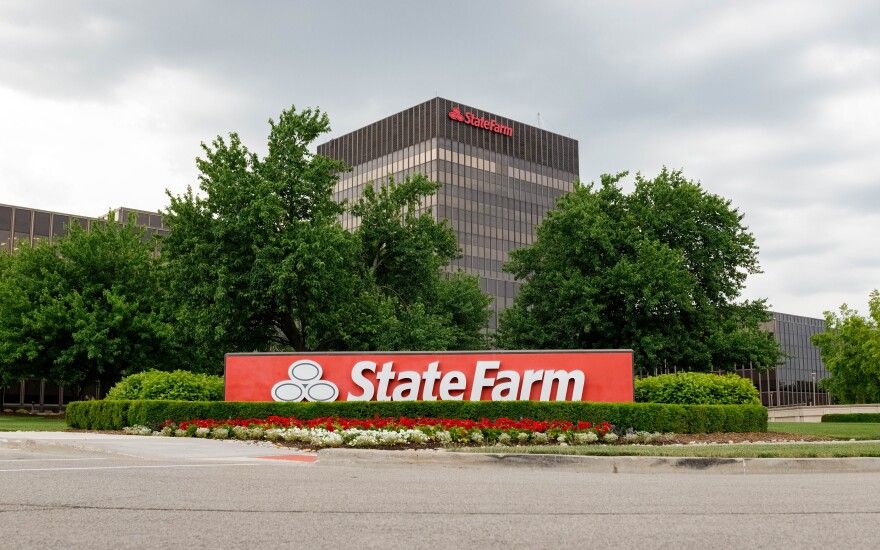Gov. JB Pritzker took the rare step Thursday of attacking one of Illinois’ largest employers — State Farm — over its plans to increase homeowners’ insurance rates by 27%.
Bloomington-based State Farm said the significant rate increase in Illinois was caused by inflationary pressures on home replacement costs and more frequent severe weather events that are driving up the cost and frequency of claims. The rate increase, averaging 27%, will impact 1.5 million policyholders in Illinois.
Pritzker said he’s “deeply concerned by State Farm’s unfair and arbitrary insurance rate hike” and that the company’s actions are “antithetical to the core principles that the Illinois business community is built on.”
“These increases are predicated on catastrophe loss numbers that are entirely inconsistent with the Illinois Department of Insurance’s own analysis — indicating that State Farm is shifting out-of-state costs onto the homeowners in our state,” Pritzker said in a statement. “Hard-working Illinoisans should not be paying more to protect beach houses in Florida.”
State Farm denied that, saying Illinois premiums “are priced for the risk in this state — not for losses in other states, including wildfires, earthquakes, or hurricanes.”
The company said two challenges were adding to the need for the big rate increase, which was filed in early June. One is inflation driving up the costs of materials and labor, affecting how much it costs to repair or rebuild homes. The other factor is more severe weather. For example, State Farm said Illinois had more hail damage claims than any other state except Texas in 2024.
In a webpage specifically set up to respond to concerns about the Illinois rate hike, State Farm stressed it’s not a publicly traded company with profit as the only motive.
“As a mutual company, State Farm is focused on serving its policyholders. Unlike companies with shareholders, our goal is not to maximize profits but to earn enough to maintain financial strength that allows us to keep the promises we make and to support future growth,” the company said.
State Farm said its total costs amount to $1.26 for every $1 in premium it collects.
That appears to be a reference to its combined ratio — a key measure of an insurance company’s underwriting profitability. It compares the insurer’s expenses and losses to premiums paid by customers. A combined ratio over 100% means a company is losing money on underwriting. Under 100% means it’s profitable; 100% would be break-even.
Indeed, State Farm’s combined ratio for Illinois homeowners was 126% in 2024, and 130% in 2023, according to a filing with the Illinois Department of Insurance. But the company’s combined ratio has been above 100% in 12 of the past 14 years, and it’s been over 120% in 7 of the past 14 years.
Insurance is generally regulated state by state, rather than at the federal level. Pritzker said he’s directing “the Illinois Department of Insurance to take all available regulatory action to enforce the law and ensure a level playing field for Illinois homeowners.”
“I also am calling on the General Assembly to enact a legislative solution during veto session that prevents insurance companies from taking advantage of consumers through severe and unnecessary rate hikes like those proposed by State Farm,” Pritzker added.






